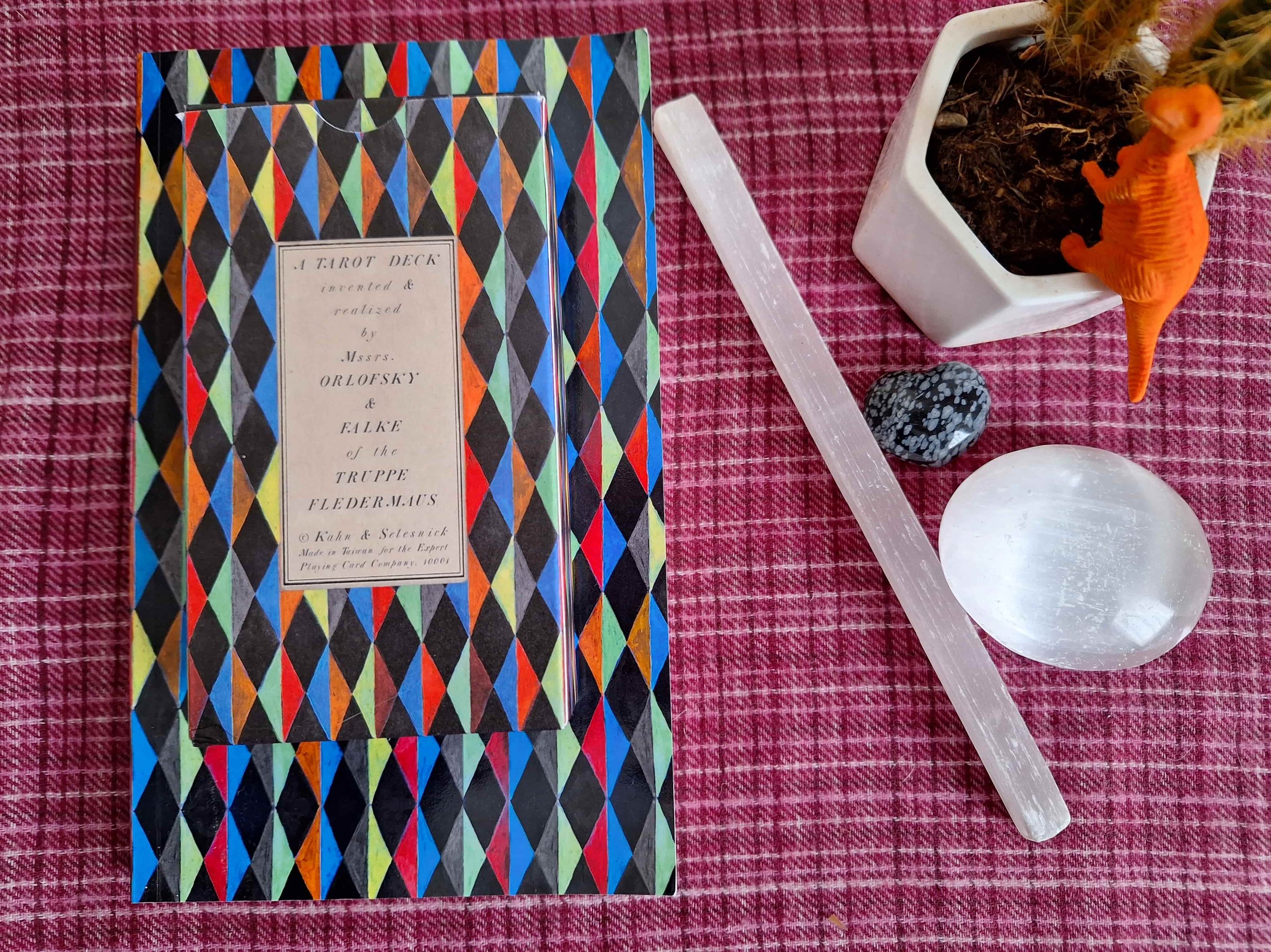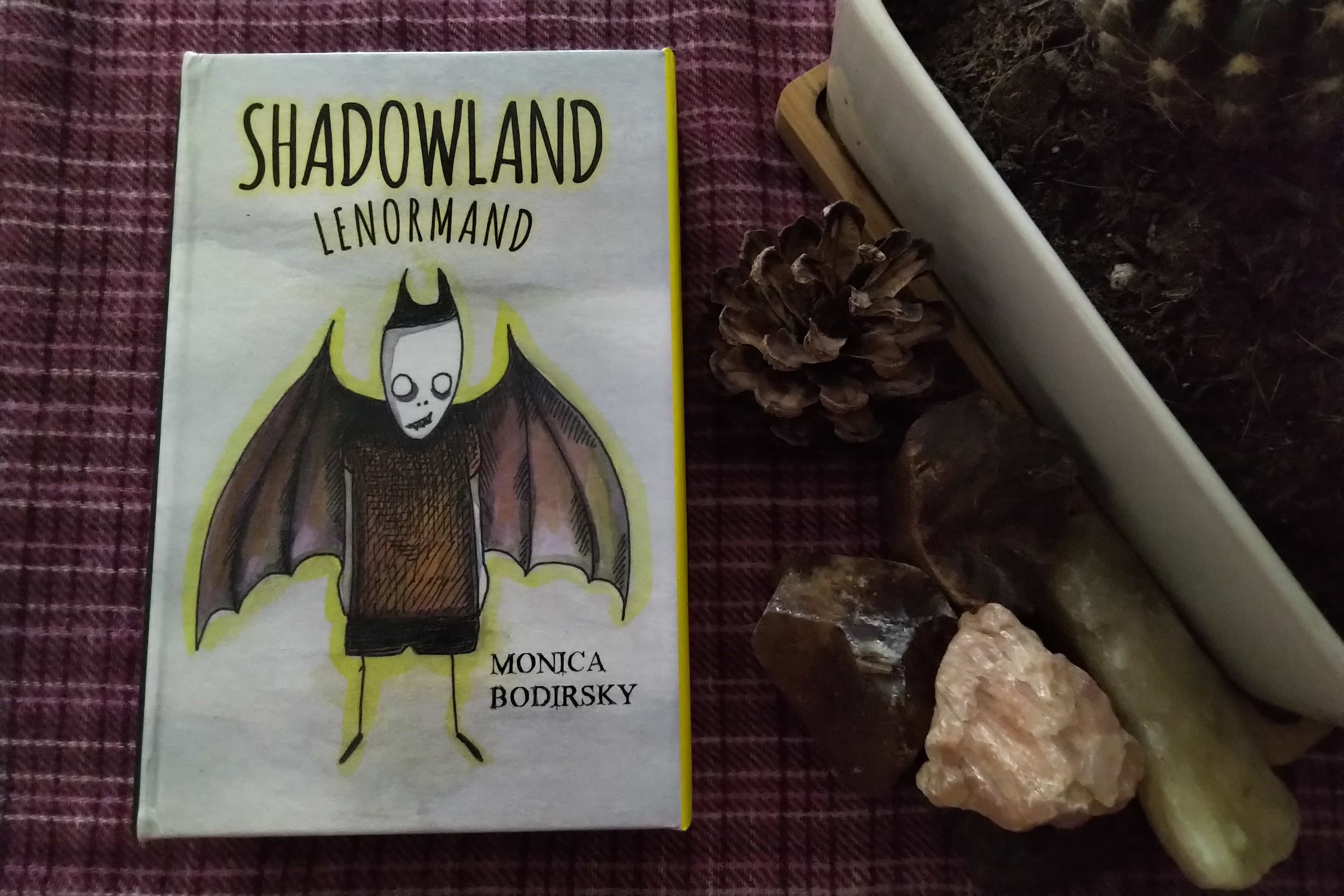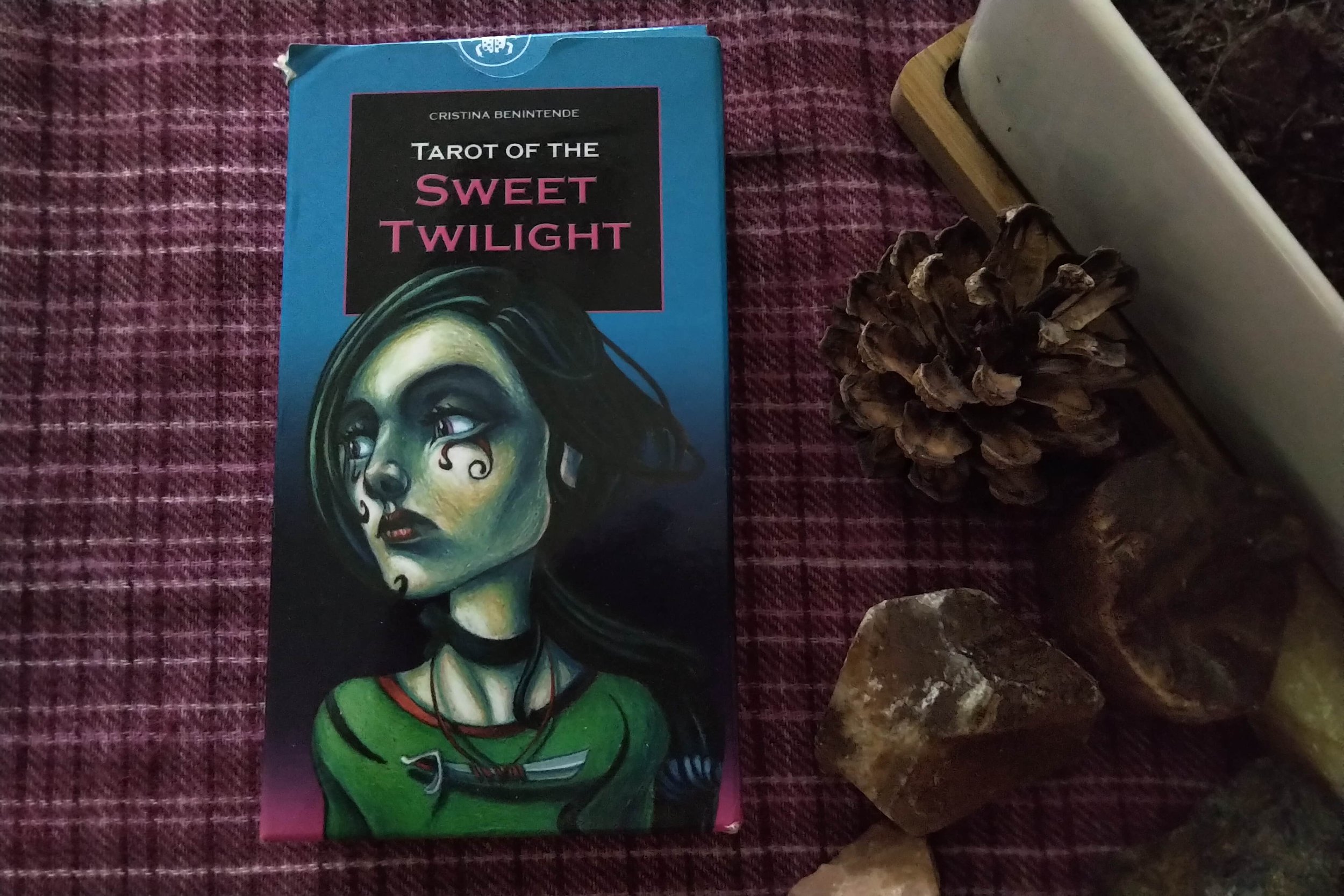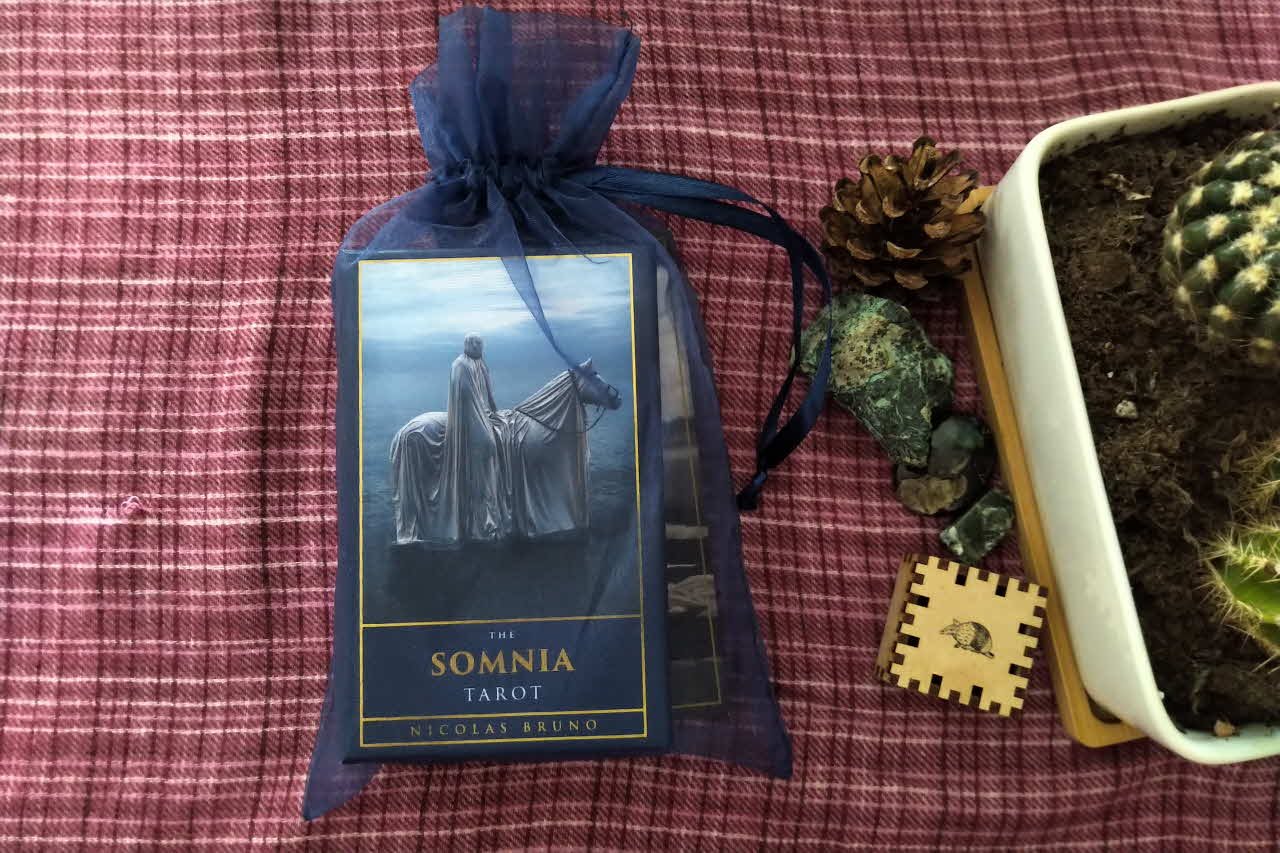Tarot of Mystical Moments


Published by U.S Games in 2020, Tarot of Mystical Moments is the creation of Catrin Welz-Stein. The cards are on the large size, although they’re not unmanageable. They arrived in a small but sturdy box and come with a small guidebook. We have gilded edging, but this time in silver. However, thanks to the mass-market price tag, it’s not too painful to buy a second deck if you want to keep a spare in pristine condition for collection purposes.


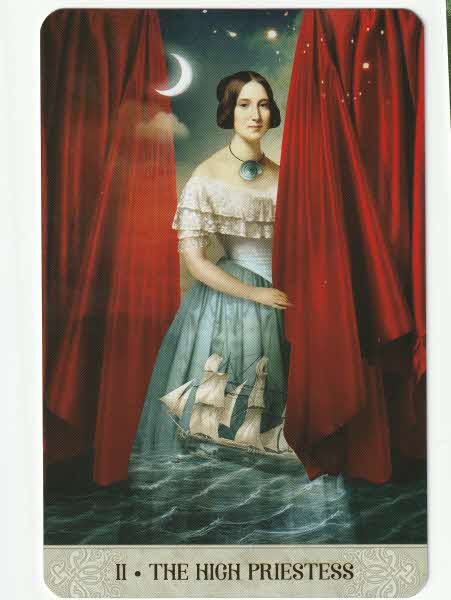
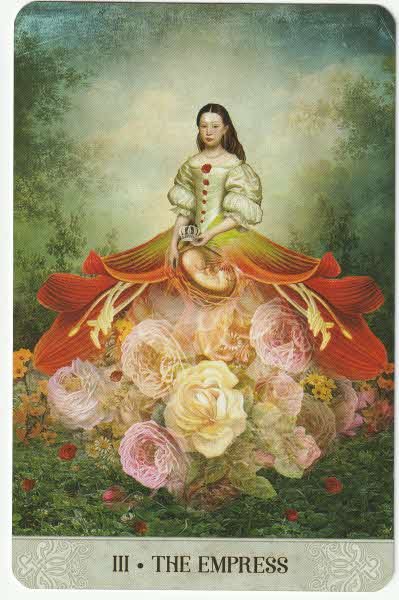





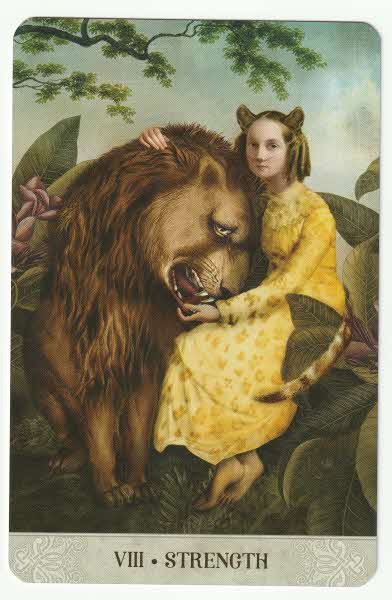
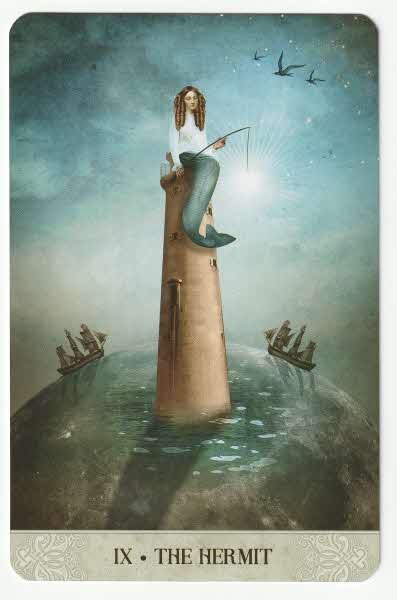

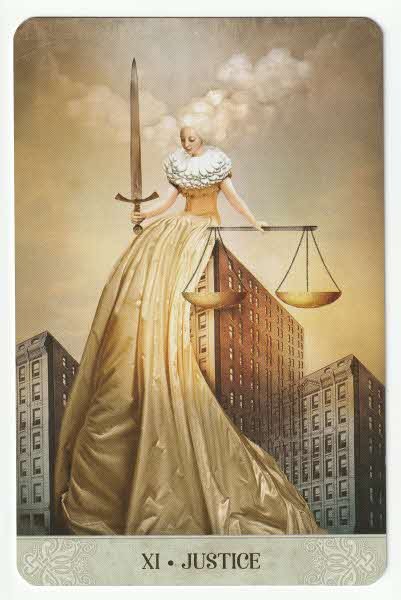










The major arcana designs are strong in this deck. I always go through all the cards and pull out the ones I’m especially drawn to, and I’ve got over half of the majors to one side. I’m not going to write about them all, but I’m not finding it easy to choose a handful. I love The High Priestess card. A woman stands behind bold red curtains, yet there’s a ship sailing on waves in front of her skirt. Catrin writes that the ship in the waves represents ‘intuition that guides you on your journey of self-knowledge and understanding.’ The Tarot of Mystical Moments contains a few extra cards. There are two cards for The Emperor, one male and one female. Each of the Kings in the minor arcana also has a female representative. There are significant differences between the two Emperor cards. I’m not particularly drawn to the female version despite the fact it’s a strong image. The female emperor is a giantess that holds many leashes with humans at the end. I think this symbolically expresses a couple of points; one is that The Emperor is often in charge of other people at work, and the other, perhaps a little more negative, is that The Emperor is someone who can be controlling of others. Compared to the tiny people, her enormous size indicates someone with more power than most. However, I would also say this can represent someone who will metaphorically step on others without realising. The male version is less imposing; he still looks martial in his soldier’s attire, yet he has flowers on his upper body and sports twigs as a moustache. Added to the trees in the background, this gives the impression of someone firmly rooted in the physical world.
The Hierophant is wonderfully calming and features a small young girl sitting on the branch of a tree. She is listening intently to a large owl who is reading from a book. The image is a solid representation of the traditional meaning, and in the booklet, Catrin writes, “The Hierophant is represented here by an owl sitting on a branch of an ancient tree with strong roots. He is reading out of a book in front of a little girl, eagerly sharing his knowledge and wisdom with her. The girl is listening very attentively. The old tree represents tradition grown out of centuries. The card suggests that you can honour these traditions and fulfil society’s expectations by embracing existing beliefs and conventions”.
Upright meaning: Honouring traditions and rituals, institutionalized knowledge, accepting conventions.
Reversed Meaning: Non-conformity, focus on individualism, rejecting traditional ways.
Another major arcana that draws my attention is The Chariot, portrayed as a snail; even the female rider has a snail shell covering her head. If I pull this in a reading, I’ll assume progress can be made but at the metaphorical snail’s pace. The Hermit has a solid water element, with the mermaid sitting on top of a tower with a fishing rod. While The Hermit does indicate a time of self-reflection, it’s generally portrayed as a mercurial process. The emphasis on water suggests inner work will be about emotional growth rather than mental understanding. The woman clinging to the collapsing building in The Tower could indicate resistance to change. I’ll be interested to see how that plays out when it shows up in a reading. And finally, I love the relative simplicity of The Moon card and how the octopus-like tentacles, representing anxiety and fears, are coming up underneath her.
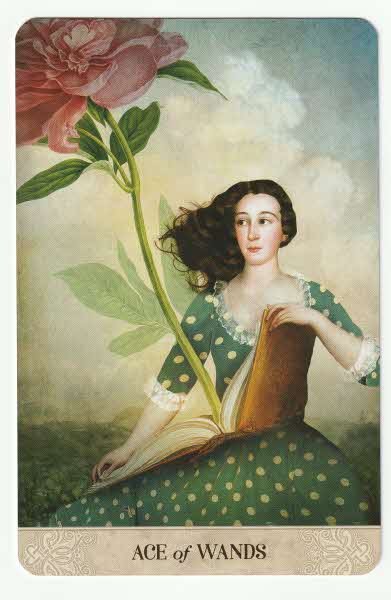

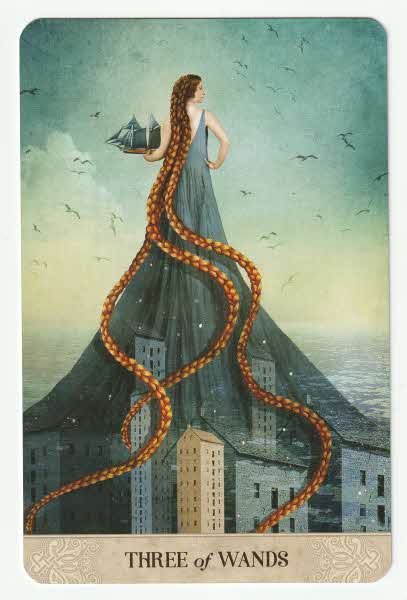




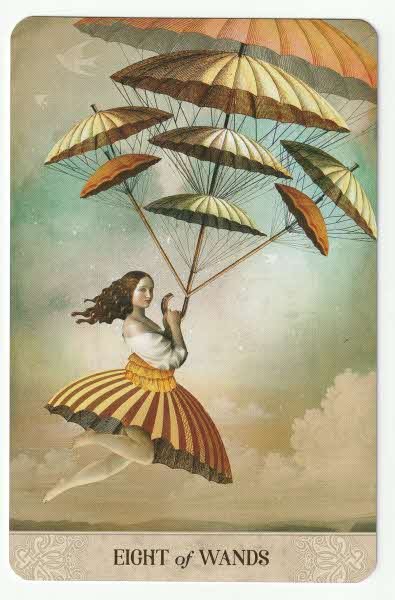






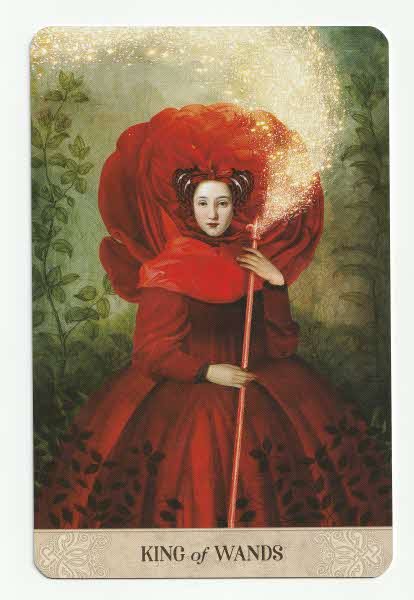
The minor arcana are all beautifully illustrated and don’t rely on traditional cues, meaning the title on each card’s bottom is necessary. The two of wands is a lovely card that conjures memories of childhood and long-held goals and ambitions. Of this card, Catrin says the earth represents potential, and she points out that the girl has not yet left her comfort zone, symbolised by her sitting on the roof of a home. I like that she helps the reader understand the symbolism of the objects in the imagery. The three of wands is a striking image of a girl with exceptionally long hair who holds a ship in her left hand. The fact she has her other hand on her hip indicates a slight impatient at having to wait. The buildings underneath her emphasise her height, and Catrin writes that the woman can see what lies far ahead. I need to mention a couple of the court cards because I love the little clues they hold. The first is the Page of Wands: The court cards don’t usually leave me feeling inspired, but I love how the Page is holding up a giant magnifying glass. It captures the essence of curiosity often present in young fire signs. The colourful birds surrounding her help to emphasise a sense of adventure, and maybe there is an underlying need to go off on exciting travels or at least surround the self with exotic objects. The Knight of Wands shows a daring and brave young woman riding a horse through a flaming hoop. She’s not looking where she is going, which is typical of impulsive and fiery characters. However, her position within the hoop suggests she’s in no danger of being burned despite her apparent lack of focus.

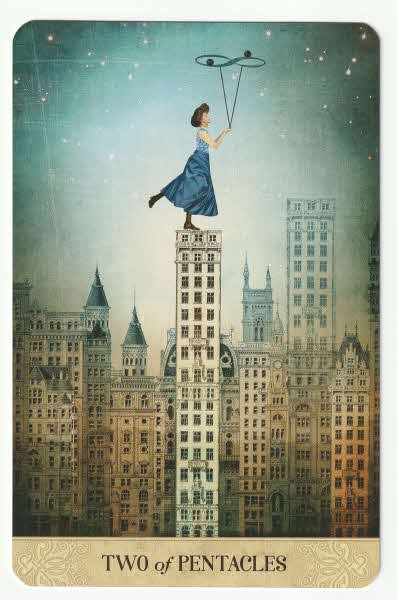





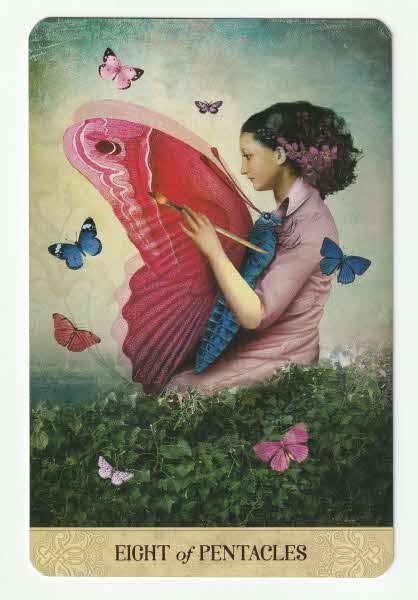







The pentacles are mostly a visually calming suit. I’m drawn to the four of pentacles because Catrin has managed to capture a couple of essential aspects of this card. If we look at the woman, she is well-dressed and appears financially comfortable. The way she hugs the house to the core of her body suggests a stable individual who is secure within themselves. There’s a sense of security, represented by the fence, chain, and padlocks. Taken to extremes, the four of pentacles suggests holding on too tightly and a fear of moving out of the comfort zone to enable further growth. I think we can see this expressed in the card, but I’d probably say that the sense of comfort is too strong, and when it shows up in a reading, it’s more likely the person will choose to remain stable and sure than take any risks. If we compare this to the five of pentacles, it makes the differences between the two cards all the more apparent. In the five, the woman has little to cover her body, and nothing grows around her. The snow indicates a situation where either something or someone is frozen. However, there is hope in Catrin’s interpretation because the woman’s skirt, despite lacking fabric, shows us there is a framework in place. The flower’s presence could suggest she has the creative means to escape the situation. In the booklet, Catrin says the thorny rose represents her poverty and loss, and the five brightly lit windows behind her are symbols of hope and spiritual support. I love the male King of Pentacles in this deck. The man in a suit standing on the antlers of a deer surrounded by healthy-looking vegetation suggests someone who remains grounded no matter how much he achieves in the external world.






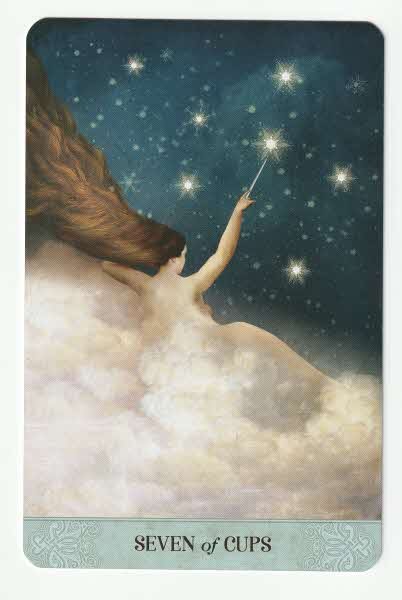

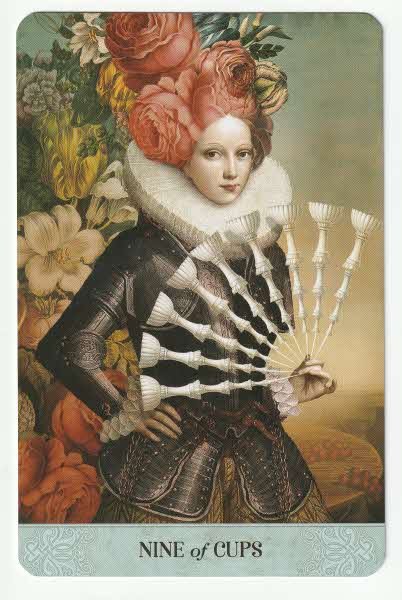






The suit of cups has a ton of cards I like. The four of cups are pretty intriguing. The young woman sitting in contemplation doesn’t look happy. Catrin writes, “she is so preoccupied with her thoughts, she does not care about the duck offering an umbrella to protect her”. She further states that the four colours on the umbrella represent differing attitudes and perspectives that can be used to change an unhappy situation. It’s a nice creative take on the card’s traditional meaning of apathy, boredom, and emotional dissatisfaction. The four of cups usually suggests something on offer, but it is not seen because of a state of self-absorption. I find the five of cups quite beautiful and love how the young woman stands knee-deep in a lake. This card often expresses the aspect of being bogged down with emotion, but it rarely overwhelming unless the three of swords or similar are present. Part of the problem is often wishing a situation could have been different somehow, and regret that a connection didn’t deepen as wanted. With the five of cups, we’re usually asked to focus on what we still have, rather than what is lost or never gained to begin with. The The male King of Cups is stunning, but the female version is possibly my favourite card in the entire deck. It’s just perfect. I relate strongly to its symbolism and could spend hours meditating on the imagery.















The swords are by far my favourite suit. I’d be happy to line my walls with poster-sized versions because they look so good as stand-alone images. The ace gives us a good representation of having the key to unlock the ideas in the mind. The two is a creative take with two birds arguing; this symbolises the indecision and mental dilemma this card so often represents. Despite the deck being female-dominant, I find it interesting that Catrin chose to use a male figure for the heart-wounded person in the three of swords. The eight of swords gives us a familiar contemporary version with a woman seemingly trapped within a cage. Symbolically, the open lid above her head tells us that the restrictions are of our own making, and her wings further emphasise that she can fly away from the cage at any point. The Queen of Swords shows a woman sitting on top of an enormous balloon surrounded by birds. Telescope in hand, she’s looking to the future, but I also think this expresses the ability to be observant and rise above mundane concerns. I prefer the female version of the King of Swords and love how she’s holding a giant needle with light-decorated thread. Catrin writes, “This needle is so sharp that the King can pluck the shining stars from the universe and sew them onto her sparkling dress. [. . .] The stars symbolize the infinite knowledge that exists in the universe”. It’s an excellent visual prompt for grasping knowledge that is out of reach for most.
All in all, it’s a lovely deck and will appeal to those with a solid creative streak because the artwork is so stunning. The Tarot of Mystical Moments is symbolically rich. I can imagine being able to develop an intense connection with these cards; this means it would be suitable for those times when you look a little deeper at yourself or situations. As a deck for beginners, it’s okay, but you would need to get other books to flesh out the basic meanings. I think it’s a brilliant deck for everyday use and would be perfect for women who want something female-dominant.



